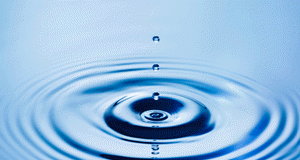 Even as California’s population has grown by millions, its per-capita water use has declined, a recent Public Policy Institute of California (PPIC) report revealed.
Even as California’s population has grown by millions, its per-capita water use has declined, a recent Public Policy Institute of California (PPIC) report revealed.
The report, which focused on water usage across three sectors: community water systems, agriculture, and “environmental water,” also found that agriculture is using about the same amount of water to produce more valuable crops.
Agriculture
California’s agriculture sector produces more than 400 commodities, generates more than $50 billion in annual revenue, and employs more than 420,000 people. Most of this revenue comes from irrigated crops.
Irrigated farmland is concentrated in the San Joaquin Valley (54% of the state total), the Sacramento Valley (21%), the North, Central, and South coasts (9%), and the southeast desert region (6%).
Perennial fruit and nut crops’ share (led by almonds) has increased, up from roughly a quarter of irrigated acreage in 2000 to nearly half in 2018. In the San Joaquin Valley, perennials cover more than 60% of irrigated acreage.
According to the report, although irrigated acreage and farm water use have not grown, the value of agricultural output has been rising, reflecting the industry shift toward perennials. Adjusted for inflation, farm gross domestic product (GDP) was 23% higher in 2018 than in 1980, while farm water use was 15% lower.
Community Water Systems
On average, 10% of the state’s water goes to communities. More than 400 large, urban water utilities supply water to more than 90% of California’s residents, and nearly 2,500 smaller utilities serve more rural communities. Tens of thousands of rural homes get their water from domestic wells.
Water use by urban, suburban, and rural communities—also known as urban water use—is highest in the San Francisco Bay Area and the South Coast; both regions rely primarily on water imported from elsewhere.
Total water use by communities grew steadily until the 1990s. Since then, California’s population grew by 5.5 million people from 2000–20. Water usage has mostly plateaued, but continues to decline overall.
Initial water savings came mainly from more efficient indoor plumbing and fixtures, and more recent efforts have also focused on reducing outdoor use, which accounts for nearly half of all urban use.
Environmental Water
Environmental water supports natural infrastructure that is important to people and freshwater biodiversity. Water use by the environment falls under four categories: wild and scenic rivers, instream ecosystem use, water quality maintenance for communities and farms, and wetlands within wildlife preserves.
The environment’s share of water use varies dramatically by region. On average, half of the state’s environmental water use occurs in the sparsely populated North Coast, mostly for flows down protected wild and scenic rivers.
Outside of the North Coast, another 36% of environmental water use occurs in the relatively wet Sacramento Valley. The San Joaquin Valley accounts for 12% of environmental water use, and less than 2% occurs in the rest of the state.
On average, 38% of the water flowing out of the Sacramento–San Joaquin Delta goes to the environment. By PPIC’s accounting, only one-third of that water—and even less in dry years—is used to protect fish and wildlife; the rest keeps the Delta fresh enough for use by cities and farms.
In wet years, environmental water makes up a larger share of available water (61%) than in dry years (41%); in critically dry years it can plummet.
To read the PPIC report in full, click here.


